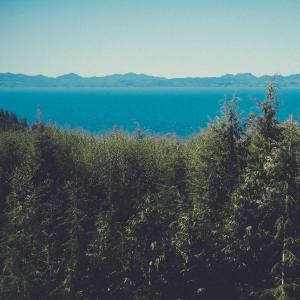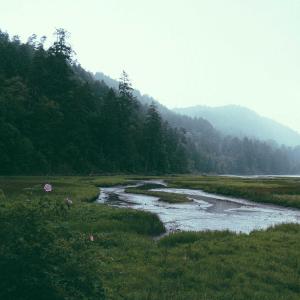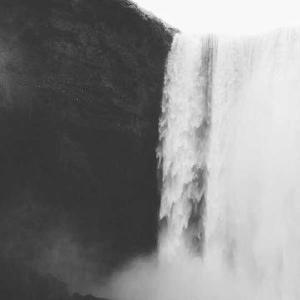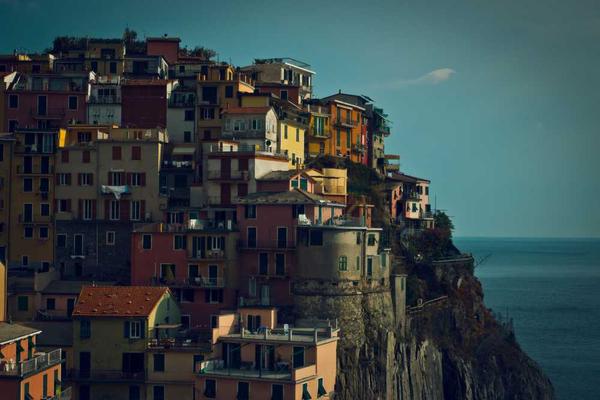Image Gallery Shortcode
Learn how to use the image gallery shortcode to create responsive galleries with thumbnails, captions, and a JavaScript-powered lightbox.
1136 Words … ⏲ Reading Time:5 Minutes, 9 Seconds
2025-05-10 04:30 +0000
The gallery shortcode allows you to easily create beautiful, responsive image galleries on your Hugo site. It takes a list of image sources (local paths or remote URLs), generates thumbnails for local images, and wraps them in links that open a larger version in a clean, vanilla JavaScript lightbox.
Features
- Responsive Design: The gallery adapts to different screen sizes using flexbox.
- Thumbnails:
- For local images (from
/assetsor/staticfolders), 300x300 pixel square, smart-cropped thumbnails are automatically generated. - For remote images, the original image is used as the thumbnail source, and CSS (
object-fit: cover;) ensures it fits the 300x300px thumbnail container.
- For local images (from
- Lightbox:
- Clicking a thumbnail opens the full-resolution image in a modal overlay.
- Supports navigation (next/previous arrows) between images within the same gallery.
- Keyboard controls:
Escapeto close,ArrowLeftfor previous,ArrowRightfor next.
- Captions:
- Automatically generated from the image filename (without the file extension).
- For remote URLs, query parameters are stripped before generating the caption.
- Captions are displayed in the lightbox and appear on hover over the thumbnail in the gallery.
- Vanilla JS & SCSS: Built with no external libraries for lean performance.
How to Use
To use the shortcode, simply list your image sources (one per line) between the opening and closing gallery tags.
{{< gallery >}}
path/to/your/image1.jpg
https://example.com/remote/image2.png
/static-path/image3.webp
{{< /gallery >}}
Configuration
You can configure the gallery’s behavior and appearance through your hugo.toml file and by customizing SCSS variables.
Enabling the Gallery
To use the gallery shortcode, you must first enable it in your site’s configuration. Add the following to your hugo.toml file under the [params] section:
[params.gallery]
enable = true
Customizing Thumbnail Size
The default thumbnail size is 300x300 pixels. You can customize this by adding a thumbnail variable under [params.gallery] in your hugo.toml. The value should be the desired dimension in pixels (the number only).
[params.gallery]
enable = true
thumbnail = "300" # Default is 300, meaning 300px
Styling with SCSS Variables
You can customize all aspects of the gallery and lightbox appearance by editing the following SCSS variables, typically found in your theme’s assets/scss/_colors.scss file (or a similar SCSS partial responsible for color definitions):
// Image Gallery specific colours
$gallery-item-box-shadow: 0 2px 4px rgba(0, 0, 0, 0.1) !default; // Subtle shadow for depth.
$gallery-item-hover-box-shadow: 0 4px 8px rgba(0, 0, 0, 0.15) !default; // Enhance shadow on hover.
$gallery-item-caption-background: rgba(0, 0, 0, 0.7) !default; // Semi-transparent background for readability.
$gallery-item-caption-color: #fff !default; // White text for contrast.
$lightbox-overlay-background: rgba(0, 0, 0, 0.85) !default; // Dark semi-transparent background to focus on image.
$lightbox-image-box-shadow: 0 5px 15px rgba(0,0,0,0.3) !default; // Shadow for the image in lightbox
$lightbox-caption-color: #fff !default; // Caption colour in lightbox.
$lightbox-close-nav-color: #fff !default; // Close and Navigation button colour in lightbox.
$lightbox-close-color-hover: #ccc !default; // Close button hover colour in lightbox.
$lightbox-nav-background-color: rgba(0, 0, 0, 0.3) !default; // Semi-transparent background for nav buttons.
$lightbox-nav-background-color-hover: rgba(0, 0, 0, 0.6) !default; // Semi-transparent background for nav buttons on hover.
Image Sources
To use the shortcode, simply list your image sources (one per line) between the opening and closing gallery tags.
{{< gallery >}}
path/to/your/image1.jpg
https://example.com/remote/image2.png
/static-path/image3.webp
{{< /gallery >}}
Image Sources
The shortcode supports three main types of image sources:
Local Images from
/assetsdirectory (Recommended for processing):- Paths should be relative to your Hugo project’s
/assetsdirectory. - Example: If your image is at
/assets/images/landscapes/mountain.jpg, you would useimages/landscapes/mountain.jpg. - Hugo’s powerful image processing will be used to generate thumbnails.
- Paths should be relative to your Hugo project’s
Local Images from
/staticdirectory:- Paths should start with a
/and be relative to your Hugo project’s/staticdirectory. - Example: If your image is at
/static/photos/beach.png, you would use/photos/beach.png. - Hugo’s image processing will also apply to these images if they are found and processable by
resources.Get.
- Paths should start with a
Remote Images (URLs):
- Full HTTP or HTTPS URLs to images hosted elsewhere.
- Example:
https://images.unsplash.com/your-image-id. - Thumbnails for remote images are not processed server-side; the original image is used and styled by CSS.
Examples
Below are some examples demonstrating different ways to use the gallery shortcode.
1. Gallery with Local Images from /assets
Place your images inside the /assets directory of your Hugo project. For instance, if you have images in /assets/my-trip/:
{{< gallery >}}
my-gallery-assets/landscape.jpg
my-gallery-assets/portrait.png
my-gallery-assets/pano.webp
{{< /gallery >}}
- To make this work:
- Create a folder:
your-project/assets/my-gallery-assets/ - Add images like
landscape.jpg,portrait.png,pano.webpinto that folder.
- Create a folder:
- Captions generated: “landscape”, “portrait”, “pano”.
- Thumbnails: 300x300 smart-cropped versions will be generated.
2. Gallery with Local Images from /static
Place your images inside the /static directory. For instance, if you have images in /static/event-photos/:
{{< gallery >}}
/event-photos/conference.jpg
/event-photos/workshop.jpeg
{{< /gallery >}}
- To make this work:
- Create a folder:
your-project/static/event-photos/ - Add images:
conference.jpg,workshop.jpeginto that folder.
- Create a folder:
- Captions generated: “conference”, “workshop”.
- Thumbnails: 300x300 smart-cropped versions will be generated.
3. Gallery with Remote Images
You can directly link to images hosted on other websites.
{{< gallery >}}
https://picsum.photos/seed/gallery-remote1/800/600
https://placehold.co/600x400/png
https://images.pexels.com/photos/3408744/pexels-photo-3408744.jpeg?auto=compress&cs=tinysrgb&w=1260&h=750&dpr=1
https://picsum.photos/seed/gallery-remote3/1024/768
https://picsum.photos/seed/another-image/700/500?blur=2
https://placehold.co/600x400?text=More+Examples
{{< /gallery >}}
- Captions generated: “gallery-remote1”, “gallery-remote2” (query string
?grayscaleis removed), “pexels-photo-3408744”. - Thumbnails: The original remote images will be displayed, scaled and cropped by CSS to fit the 300x300 thumbnail area.
4. Mixed Gallery (Local and Remote Images)
You can combine different source types in a single gallery.
{{< gallery >}}
portfolio/project-alpha.png <!-- From /assets/portfolio/project-alpha.png -->
/archive/old-photo.jpg <!-- From /static/archive/old-photo.jpg -->
https://picsum.photos/seed/mixed-gallery/900/700
{{< /gallery >}}
- Ensure
portfolio/project-alpha.pngexists in/assets/portfolio/andold-photo.jpgexists in/static/archive/. - The gallery will display thumbnails from all sources, processing local ones and styling remote ones.
Important Notes
- Path Conventions:
- For images in
/assets(e.g.,/assets/img/example.jpg), use the path relative to theassetsdirectory:img/example.jpg. - For images in
/static(e.g.,/static/img/example.jpg), use the path relative to thestaticdirectory, prefixed with a/:/img/example.jpg.
- For images in
- Image Processing: Hugo’s built-in image processing (for thumbnail generation) is applied to local images found in
/assetsor/staticthat are successfully loaded viaresources.Get. - File Names for Captions: Keep your filenames descriptive, as they are used to generate captions. For example,
golden-gate-bridge-sunset.jpgbecomes the caption “golden-gate-bridge-sunset”. - Empty Lines: Empty lines within the shortcode block are ignored.
- Error Handling: If a local image path is incorrect and the resource is not found, a warning will be logged during Hugo’s build process, and that item will be skipped in the gallery.
Styling and Customization
The visual appearance of the gallery and the lightbox is controlled by SCSS located in assets/scss/_gallery.scss (or wherever you’ve placed and imported it). You can override these styles in your own SCSS files to match your theme’s design.
The JavaScript for the lightbox functionality is located in assets/js/gallery.js. It’s self-contained and does not rely on any third-party libraries.
This gallery shortcode provides a flexible and straightforward way to add rich image displays to your content. Experiment with different image sources and enjoy the automated thumbnails and lightbox features!






